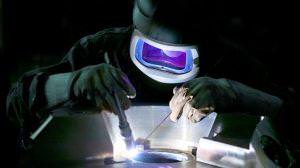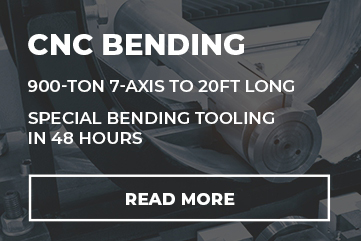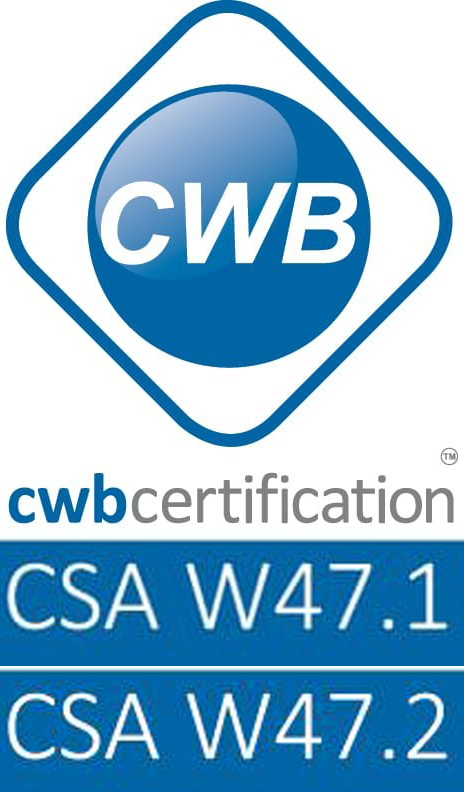Gas Tungsten Arc Welding
The GTAW Process

Welding large assemblies while using a special machine to stress relieve the welding during welding eliminates post-weld stress relieving by up to 95 percent.
Here, our employee is TIG welding large assemblies while using Meta-Lax stress relieving machine during the welding, thereby eliminating post-weld stress relieving by up to 95 percent.
GTAW Welding, also known as Gas Tungsten Arc Welding or TIG, is an arc welding process that uses a non-consumable tungsten electrode to produce the weld.
It is effective at welding metals such as aluminum, thin sections of stainless steel, magnesium, and copper alloys.
GTAW welding has many advantages over more popular and cheaper methods of welding:
- Welds are highly corrosion resistant
- Welds are resistant to cracking over long periods of time
- Welds can be made using a variety of fillers
- Welds can be made on various metals
GTAW welds are seen regularly in the aerospace and nuclear energy industries, as their performance, strength, and reliability are very high; this is true so long as the weld quality is equally as high.
Have a GTAW/TIG Welding Project?
Get A Quote 519-653-6000
Ontario’s GTAW Welding Experts
VeriForm is proud to offer GTAW welding services from our CWB CSA W47.1, 47.2, and W59 certified
certified welders, as well as access to a retained CWB Certified and Qualified Welding Engineer, all the while being supervised by on-staff CWB certified welding supervisors. You can be sure that no matter the scale of the welding project, VeriForm can deliver superior welding every time.
Learn More About The: GTAW Welding Process – Including Aluminum
The electrode used in GTAW is made of tungsten or a tungsten alloy, because tungsten has the highest melting temperature among pure metals, at 3,422 °C (6,192 °F). As a result, the electrode is not consumed during welding, though some erosion (called burn-off) can occur. GTAW welding torches are equipped with cooling systems that use air or water and are designed for manual or automatic operation. Both torch types are similar, except the manual torch is constructed with a handle while the automatic has a mounting stick.








